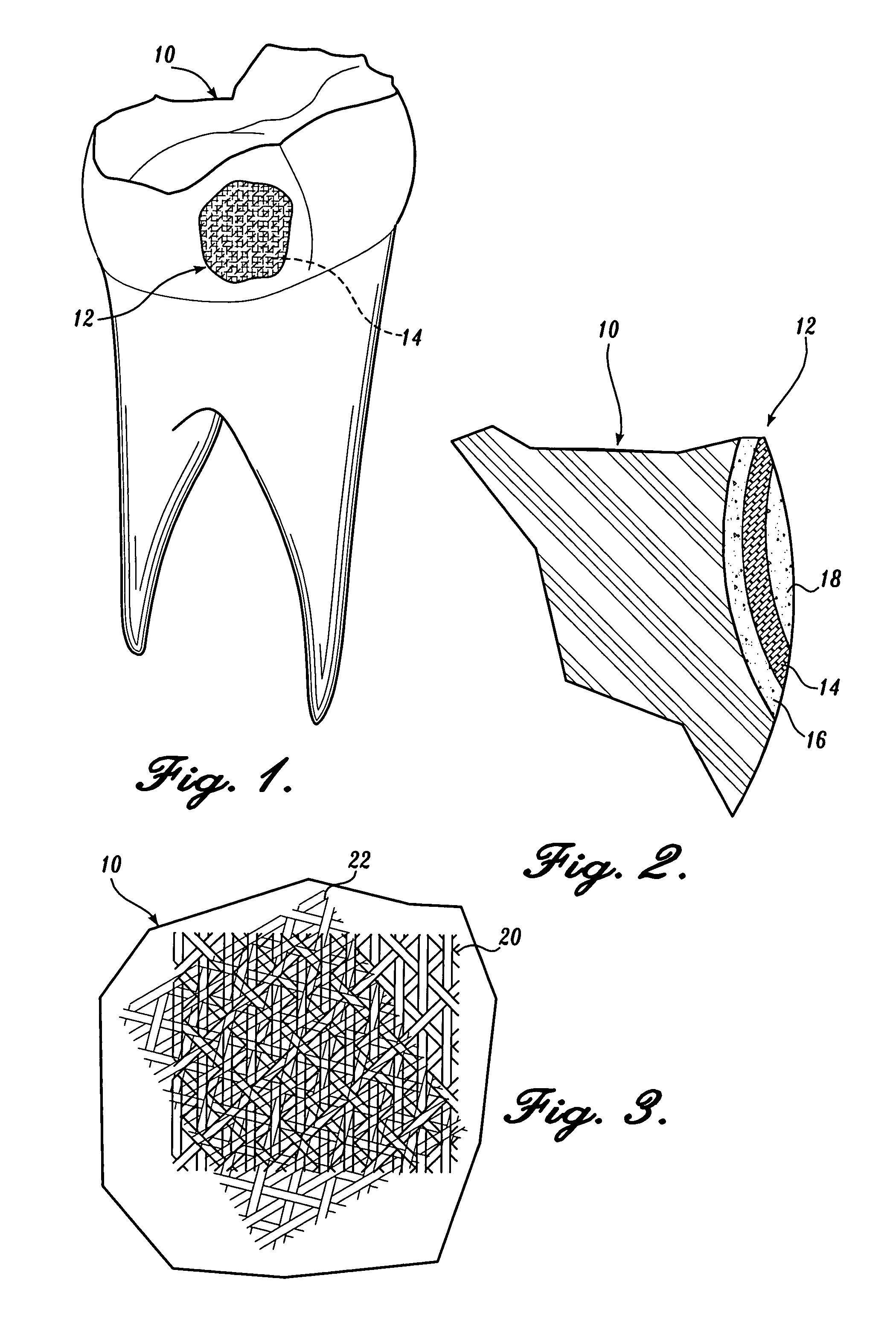Triaxial weave for reinforcing dental resins
a technology of dental resins and reinforcing fibers, applied in the direction of impression caps, prostheses, teeth capping, etc., can solve the problems of resin instability, and resins that include reinforcing fibers that are all oriented in one direction
- Summary
- Abstract
- Description
- Claims
- Application Information
AI Technical Summary
Problems solved by technology
Method used
Image
Examples
example 1
Constructing a Splint Directly on the Teeth
[0033]The methods of the present invention can be used to construct a splint directly on teeth as described herein. A piece of triaxial material is cut to the desired dimensions. The teeth that are to be splinted are prepared in a standard manner by cleaning with pumice, acid-etching and applying unfilled bonding resin. If desired, a groove may be cut in the surface of the teeth. A layer of filled, composite resin is then applied to the prepared teeth.
[0034]The cut, triaxial material is wetted with unfilled bonding resin. The excess, unfilled bonding resin is blotted with lint-free gauze, and the triaxial material is applied to the composite on the teeth. The triaxial material is then conformed to the shape of the teeth to which it is applied, and excess resin is removed. The resin is then polymerized, for example by exposure to light. An additional layer of resin is applied over the triaxial material. Either a filled composite, or a modera...
PUM
| Property | Measurement | Unit |
|---|---|---|
| thickness | aaaaa | aaaaa |
| width | aaaaa | aaaaa |
| molecular weight | aaaaa | aaaaa |
Abstract
Description
Claims
Application Information
 Login to View More
Login to View More - R&D
- Intellectual Property
- Life Sciences
- Materials
- Tech Scout
- Unparalleled Data Quality
- Higher Quality Content
- 60% Fewer Hallucinations
Browse by: Latest US Patents, China's latest patents, Technical Efficacy Thesaurus, Application Domain, Technology Topic, Popular Technical Reports.
© 2025 PatSnap. All rights reserved.Legal|Privacy policy|Modern Slavery Act Transparency Statement|Sitemap|About US| Contact US: help@patsnap.com

